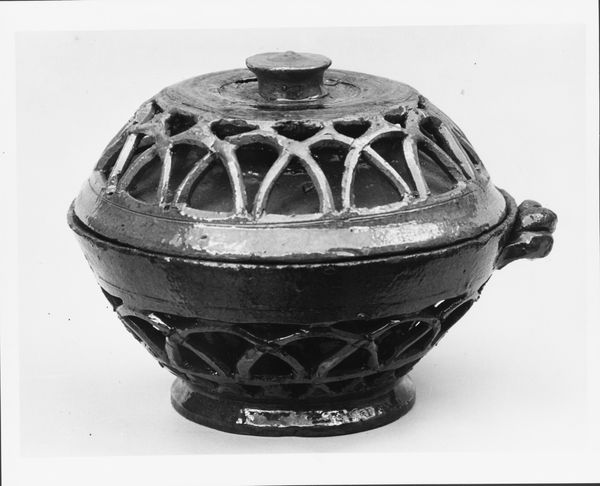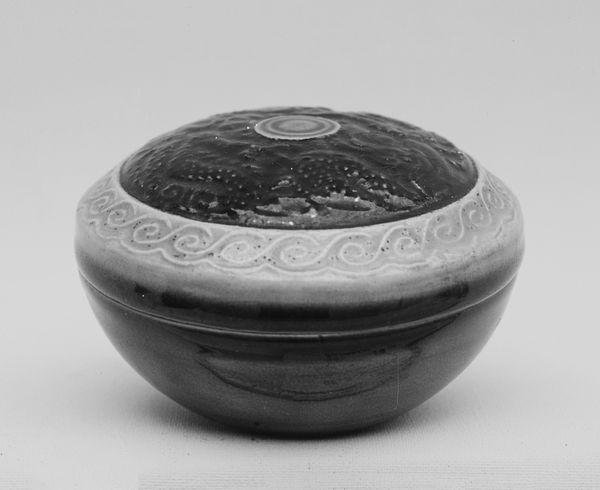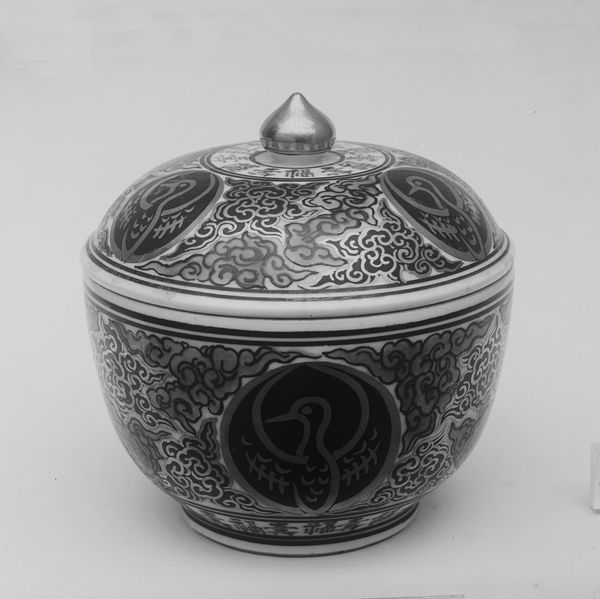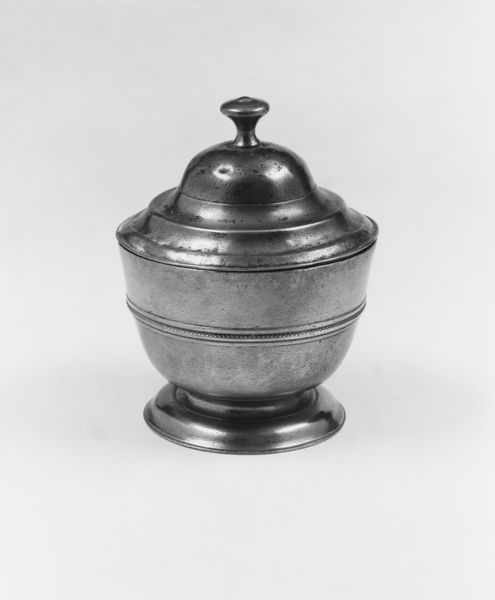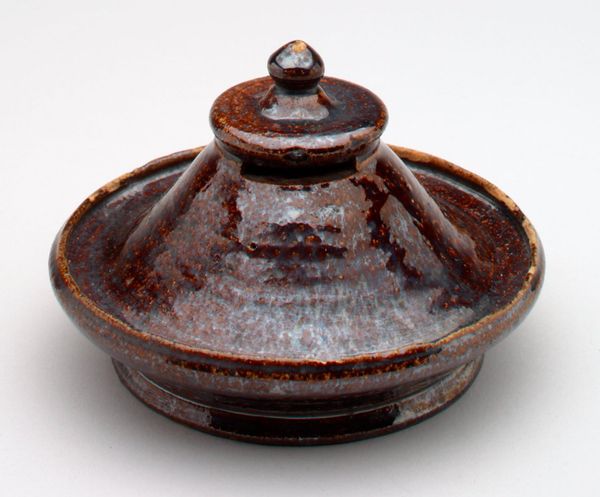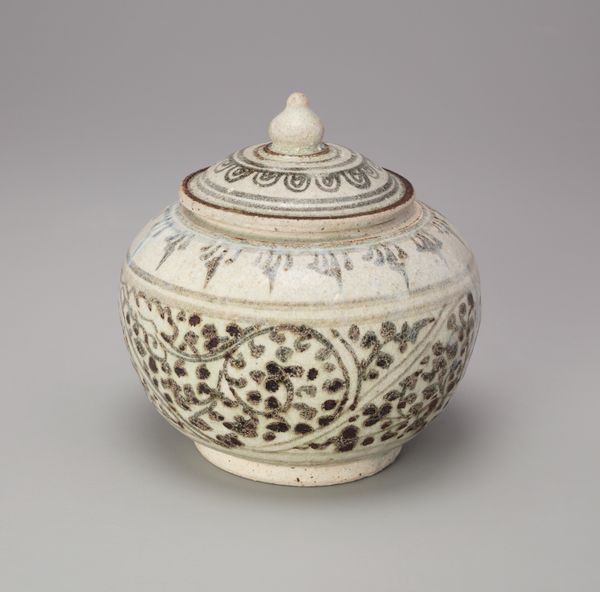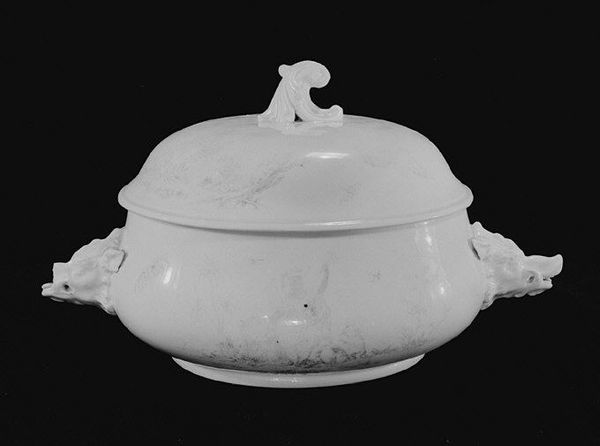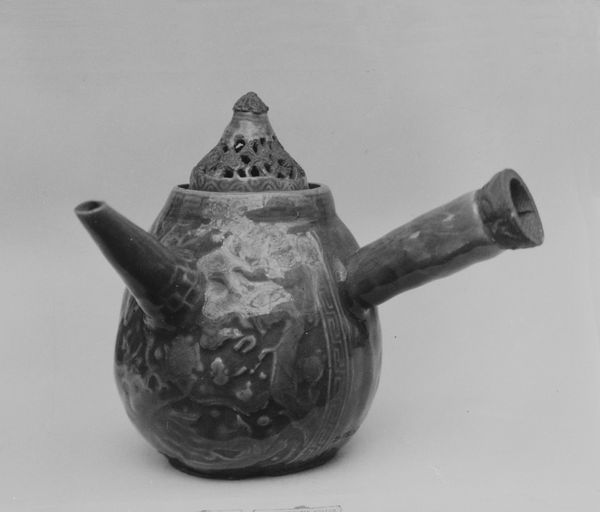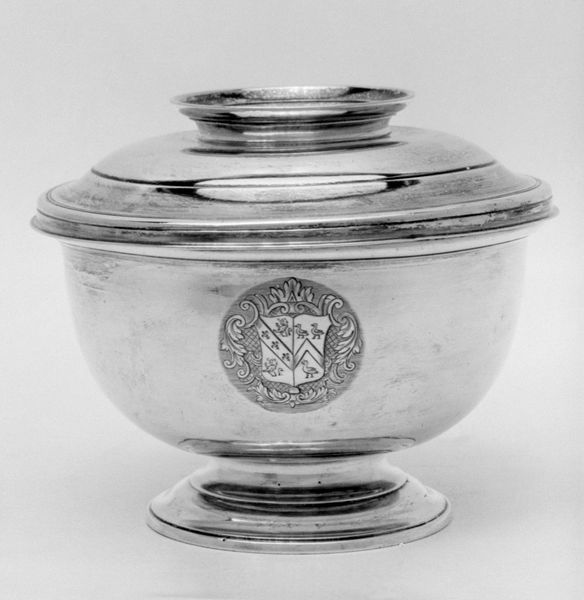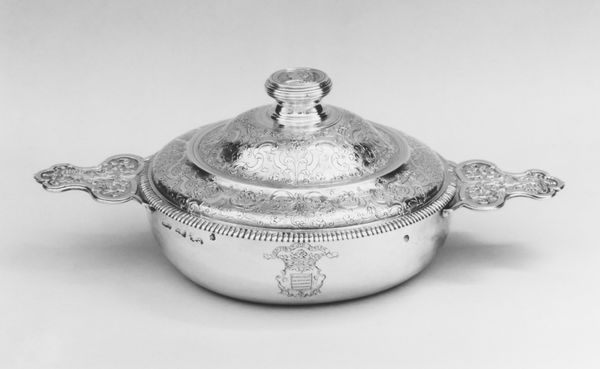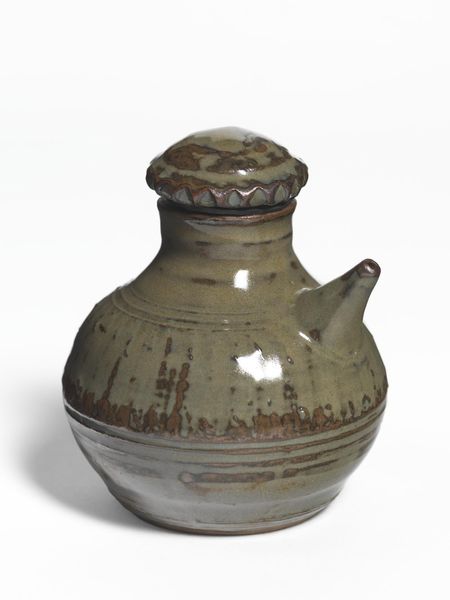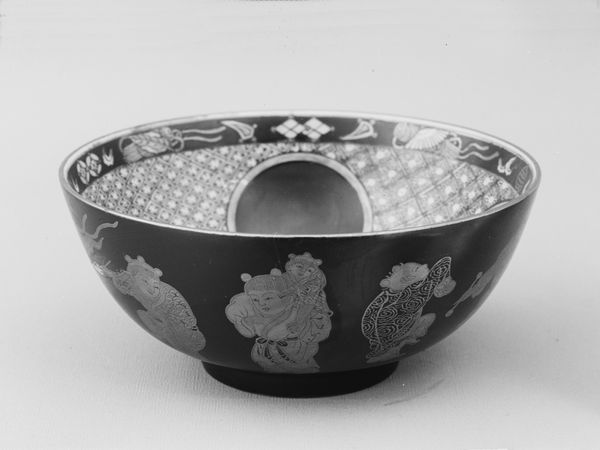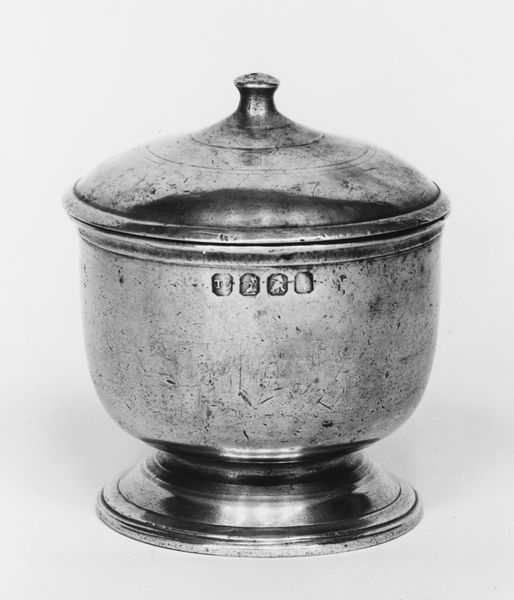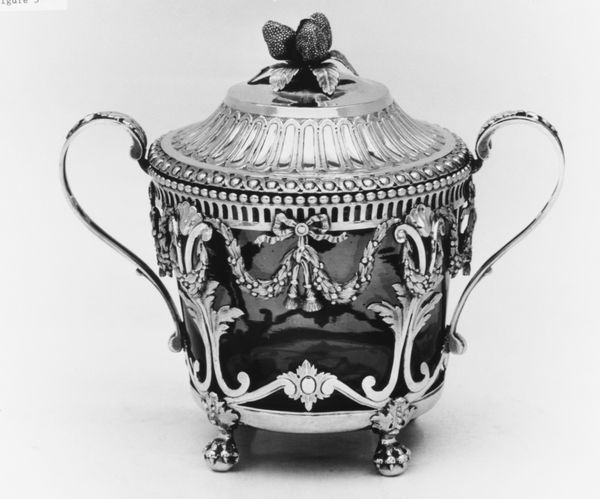
ceramic, earthenware
#
ceramic
#
earthenware
#
geometric
#
decorative-art
Dimensions: H. 4 in. (10.2 cm); Diam. 6 3/4 in. (17.1 cm)
Copyright: Public Domain
Curator: Well, here we have a "Covered Bowl," dating from roughly 1830 to 1870. It is currently held in the collection of the Metropolitan Museum of Art. The piece itself is earthenware ceramic, clearly showcasing its role within the decorative arts. What are your initial impressions? Editor: Stark. Utilitarian, yet hinting at something grander. The dark glaze creates a kind of imposing feel, doesn’t it? But that intricate, almost lace-like, cutwork tempers the boldness. Curator: Absolutely. Considering its production period, think about the burgeoning industries and class structures. A piece like this likely catered to a rising middle class, mimicking the luxuries of the elite through material and craft, wouldn't you say? Editor: Yes, definitely. The replication of lace using earthenware speaks to aspirational values of that period. But look closely, are those geometric shapes on the bowl and lid reflective of power dynamics, the restrictions perhaps felt within a changing society, or do they speak more of order? Curator: A keen observation. One could read those geometric motifs as echoing the Industrial Revolution's obsession with precision and control—influences of science imposing over domestic craft, especially if the artist themselves lived near to large manufacturing centers of that time. Editor: That’s interesting. And given its functionality, who was using it? Was it for serving during formal gatherings? How did gender play into its everyday use? Was its role strictly decorative, or functional in nature, further informing social identity? Curator: These are key questions. Function always interacts with gender roles, in shaping the dynamics of domestic labor and performative consumption in both production and utilization. It begs an intersectional investigation through class and cultural performance. Editor: I agree, analyzing art through this lens reveals hidden narratives and complex webs of social influence! The politics of decorative art are endlessly fascinating. Curator: They truly are, highlighting the tensions of access, social aspirations, and class identity. It leaves us reflecting upon those who once touched this "Covered Bowl", considering their place within this era.
Comments
No comments
Be the first to comment and join the conversation on the ultimate creative platform.
